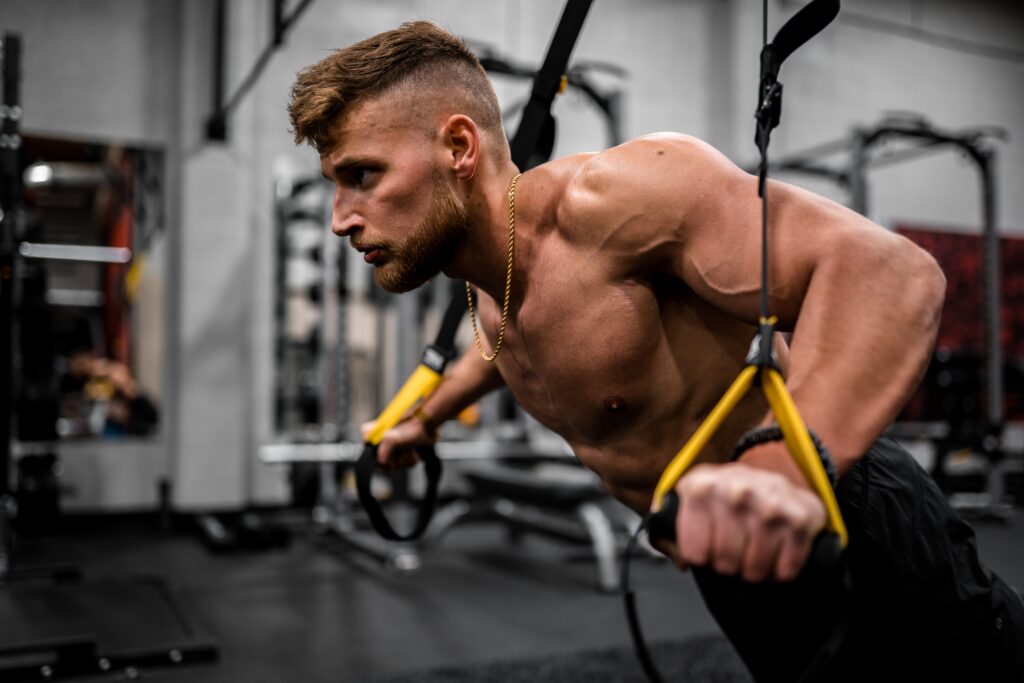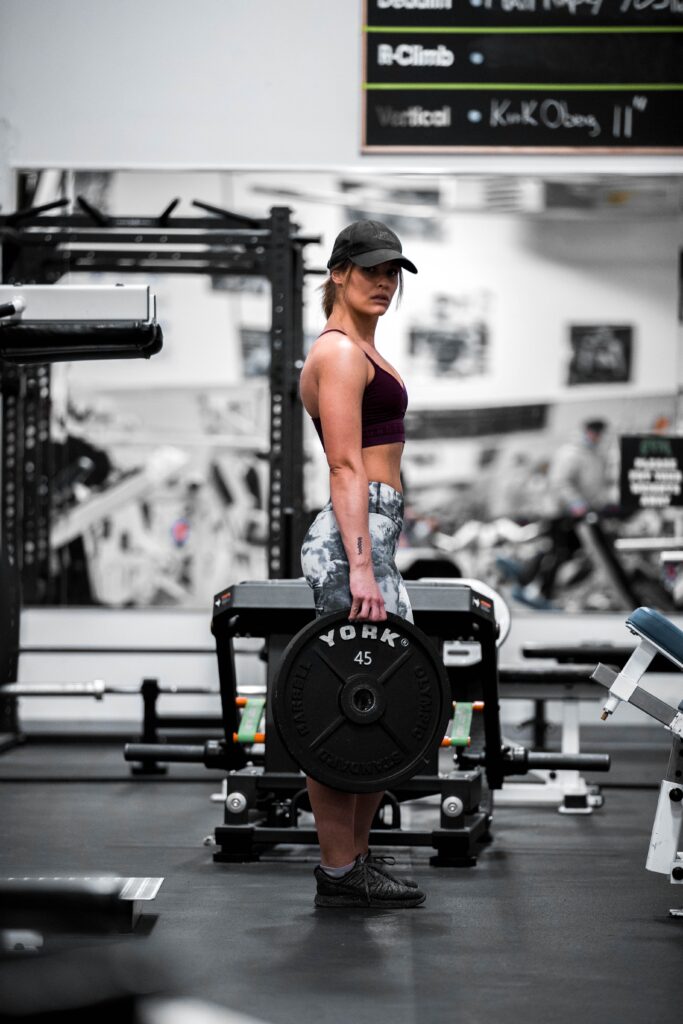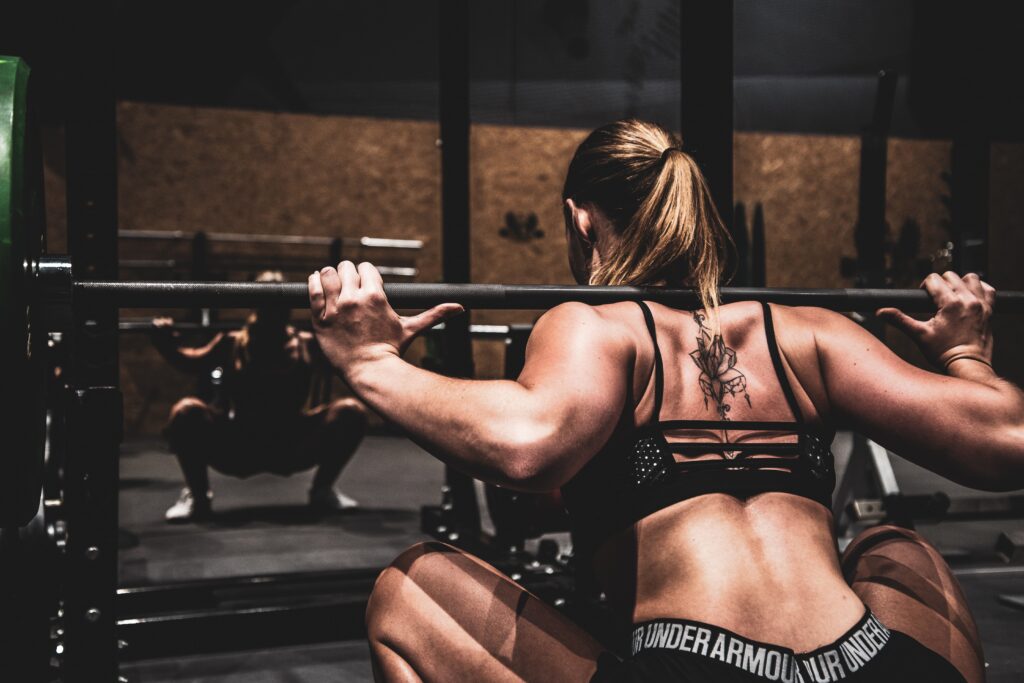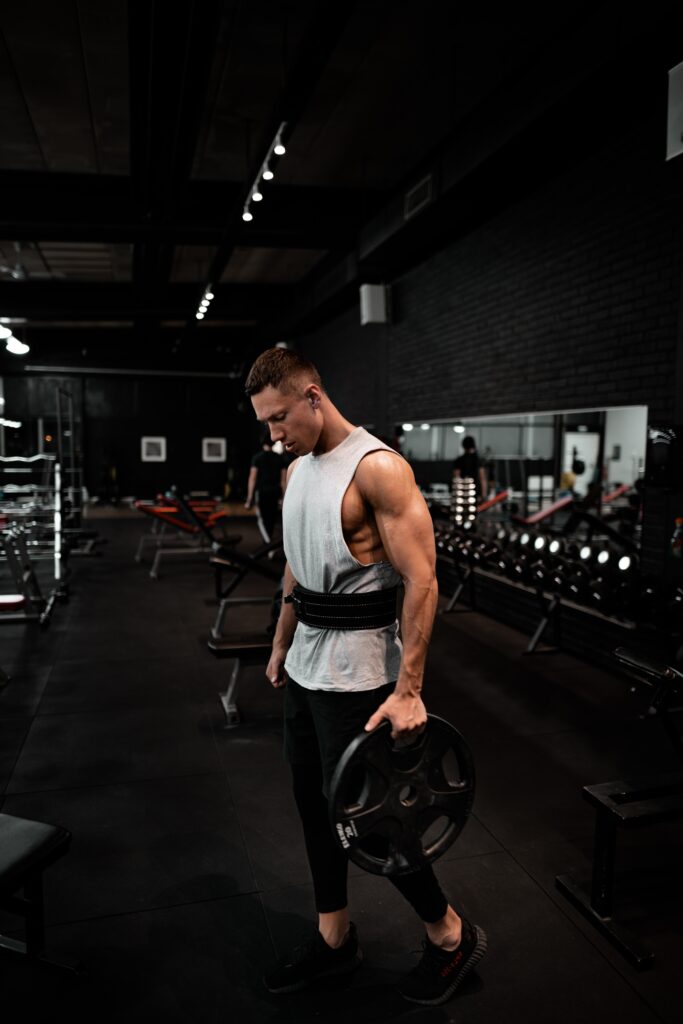
The Only 3 Shoulder Exercises You Need –
If there’s one muscle group that will make your physique stand out, it’s your shoulders. Having well-developed delts creates the illusion of a smaller waist, which is essential for creating the X-frame or V-taper most bodybuilders strive for. Aside from aesthetics, shoulder training can also help maintain optimal shoulder health.
Despite being regarded as one of the most aesthetic muscle groups, many beginner and intermediate trainees struggle to grow their shoulders, never truly reaching their full potential. That is why today we’re going to go over everything you need to know about effective shoulder training and the only three dumbbell exercises you need to grow some death-star shoulders.

First, let’s start with some basic anatomy and bio-mechanics so you understand how to best train the deltoids. The deltoids are comprised of three heads. The anterior deltoid is commonly known as the front delt lateral head, also known as the side delt, and the posterior deltoid is also known as the rear delt.
Now that we understand the basic anatomy of the delts, let’s jump into the bio-mechanics. The anterior delts assist in shoulder flexion, or raising your arm up, while the lateral delts assist in horizontal shoulder abduction, or raising your arms to your sides. The posterior deltoid assists in transverse shoulder abduction, moving your arms out to the side, as well as external rotation of the shoulder and shoulder hyper-extension.
For optimal shoulder development, you want to train all three heads; however, this doesn’t mean you need to perform isolation exercises for all of them. So, what exercises should you priorities to get the best gains? Let’s dive into it.
-
Seated Dumbbell Shoulder Press
1. Seated Dumbbell Shoulder Press
If you’re looking to maximize shoulder hypertrophy, your programmer should include a vertical press that targets all three deltoid heads, especially the anterior deltoid, but why the seated dumbbell variation?
A 2013 study looked at the deltoid EMG activity for four variations of the shoulder press: a standing and seated variation of the barbell shoulder press and a standing and seated variation of the dumbbell shoulder press. The results of the study showed that the seated dumbbell variation led to the greatest muscle activation in all three heads.
Another thing to note is that although the seated dumbbell overhead press will lead to more activation on the side, it’s mostly a front delt exercise, so you should include other exercises to specifically target the other heads if you’re looking to maximize overall shoulder growth.
-
Seated Dumbbell Lateral Raises
2. Seated Dumbbell Lateral Raises
When trying to hit the side deltoids, there’s nothing like lateral raises as they effectively train horizontal shoulder abduction. It’s important to include isolation exercises for the side delts, as most compound exercises aren’t effective at targeting this area of the deltoids.
For example, a 2013 study found that the dumbbell lateral raise and cable lateral rays resulted in much more side delt activation compared to the shoulder press and bench press. Since this article is about dumbbell exercises to add mass to your shoulders, we recommend doing seated dumbbell lateral raises as your go-to isolation exercise to target the side delts.
The main reason we recommend the seated version over the standing variation is because it reduces momentum and eliminates your ability to cheat. Speaking of cheating on reps, remember that lateral raises are a single-joint isolation exercise, which means you’ll probably get the best results by using lighter weights and higher reps in the 10 to 20 rep range.
It’s common for lifters to use too much weight on this exercise and recruit other muscle groups to assist in the movement, like the traps or lower back. As a result, rather than adding weight and risking form breakdown, it makes more sense to progress in reps until you’re strong enough to progress in weight.

For example, think about the weight. You can do three sets of 10 reps right now instead of increasing the load for your next workout and going for the same three sets of 10, then work your way up to 15 to 20 reps with the same weight. When you reach the end of the rep range, in this case three sets of 20 reps, increase the weight and restart the progression.Remember, the goal is progressive overload, not to lift more weight for the sake of lifting more weight. When performing the seated lateral raises, there are some cues you should keep in mind.
First, retract your shoulder blades before starting the exercise. From there, focus on sweeping the dumbbell out and up, leading with the elbow, until you reach shoulder height. For more side delt engagement, lift your arms slightly to the front about 15 to 30 degrees instead of directly to the sides, but be careful not to overdo it and turn the exercise into a front raise.
And finally, this is a controversial topic, but you can also internally rotate the shoulder at the top by raising your pinky above your thumb to get more side delt activation. However, this is not recommended if you feel any discomfort or have previous shoulder injuries as there is research suggesting this technique can lead to more shoulder impingement.
-
Chest Supported Rear Delt Fly
3. Chest Supported Rear Delt Fly
To wrap up this list, we need an exercise that’s going to target the rear delts, an important muscle often neglected by most people. The rear delts give your shoulders a more rounded 3D appearance and contribute to overall shoulder and postural health, similar to the side delts. They don’t get a lot of activation from shoulder presses alone; however, it’s worth noting that the rear delts are active in compound pulling exercises like barbell rows and pull-ups, but isolation exercises tend to outperform wear-dale activation, which is why you should include them in your training.
One of our personal favorites is the chest supported rear delt fly because it minimizes momentum and prevents you from cheating, thus placing more tension on the rear delts. For this exercise, you want to set the bench at about 30 degrees and place your lower chest against the top of the bench. From there, focus on sweeping the weight out into the sides, holding the contraction briefly at the top, and controlling the descent similar to the lateral raises.
Peak tension is going to occur when the dumbbells are at the top of the movement, and it will progressively go down as you bring your arms to the bottom. To work around this, stop the dumbbells slightly short at the bottom to keep constant tension on the rear delts. Another cue that might help activate more of the rear delts is your grip.
According to a 2013 study by Shonfeld, a neutral grip may result in more tension for the rear delts, but some people may get better activation from a pronated or palms facing down grip, so it’s probably best to choose what feels best for you and gives you the most mind-muscle connection. Finally, since this is a single joint isolation exercise, we recommend using a similar progression scheme to the one suggested previously.

Some common mistakes for the rear delt fly include going too fast, turning the movement into a row, or letting the back muscles take over. Remember that you want to sweep the weight out and put as much tension on the rear delts as possible. This may require you to use a lighter weight and slow down the movement, but it will lead to more gains over time. At the end, there are some things you should know that are going to help you take your shoulder training to the next level:
First, be mindful that your shoulders assist in any compound exercises, and this will also count as indirect volume. For example, a barbell bench press is mainly a chest exercise, but it will also target your anterior deltoid. A barbell row is mainly a back exercise, but it will also target your rear delts.
Second, the deltoids are comprised of about 50% type 1 slow twitch fibers and 50% type 2 fast-twitch fibers, which means they’ll likely respond better to a combination of rep ranges and loads.
So, there you have it—the only three dumbbell shoulder exercises you need to build 3D delts. If you have access to cables and machines, they can also be an effective way to train your shoulder, especially for isolation exercises like cable lateral raises and the reverse peck deck, as these exercises provide a different resistance curve and can result in more constant tension on the delts. Nonetheless, with just a few dumbbells, you can absolutely grow some impressive shoulders.
If you have any type of questions or suggestions always feel free to contact us by the below link:
By email: admin@exgentleman.com
By visiting this page on our website: Contact Us


Thank you for that 👍🏻 I’m about to workout on my shoulder. Appreciate the tips.